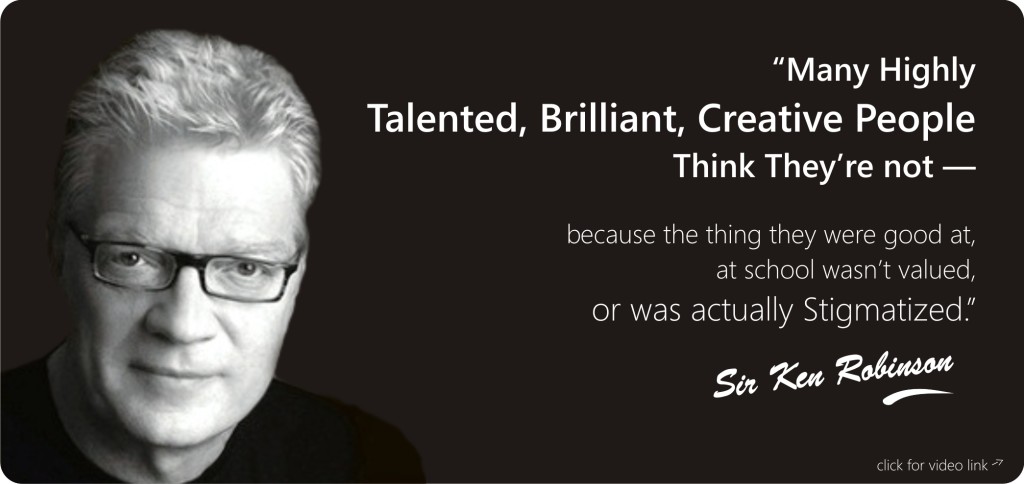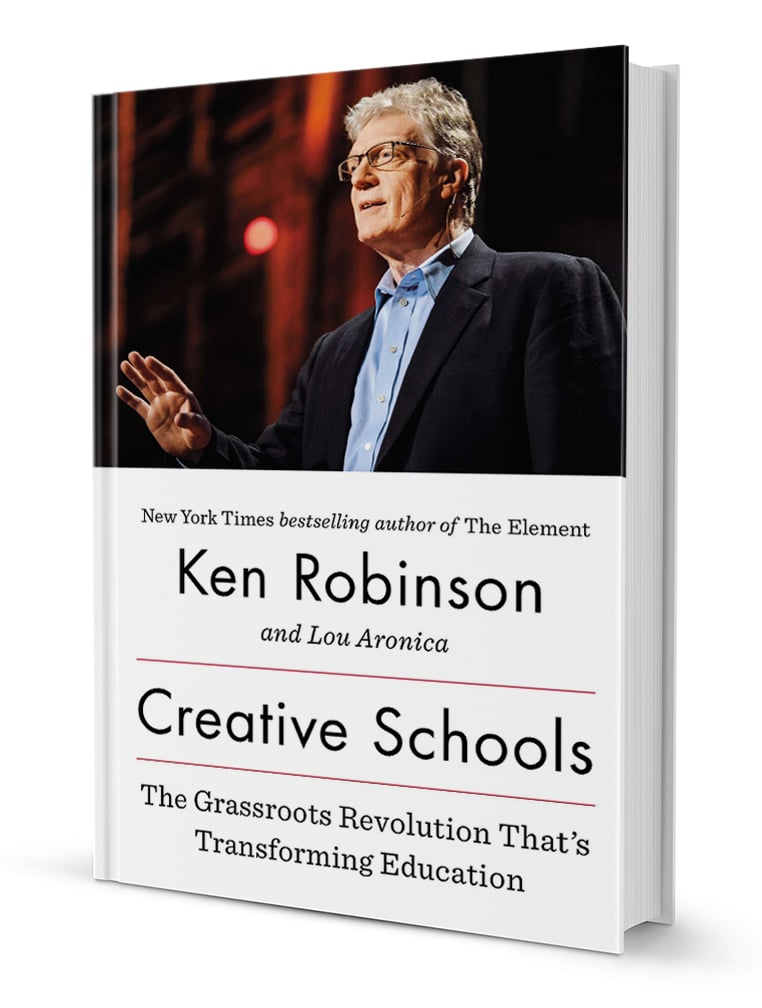
Sir Ken Robinson’s latest book “Creative Schools” is not a simple rehash of what we know so well about his ideas and theories; rather, this builds on his previous work to present insights in to how to bring creativity into our schools. Creativity is the process of having original ideas that have value. (Robinson)
We face an uncertain future, the answer is not to do better what we’ve done before. We have to do something else. –Robinson
To make change in our education is the only way to make possible a future that enables students to “understand the world around them and the talents within them so tat they can become fuldilled individual and active, compassionate citizens.” (Robinson) To truly do something different, we as educational leaders need three things:
- a critique of the way things are
- a vision of how they should be
- theory of change
Sir Ken Robinson borrows from his previous work to highlight the critique of the way things are. But what I found most compelling was how he framed his vision of how things can/should be. To do this he constructed an excellent metaphor. This metaphor takes us away from the truly industrial model of education towards a more organic, personalized one. With this metaphor, he is not suggesting that we move to a model where students are learning on their own in an online, unique and highy tailored environment; rather, he is suggesting that the way we can leverage technology is to make our classroom experiences richer:
way things are. But what I found most compelling was how he framed his vision of how things can/should be. To do this he constructed an excellent metaphor. This metaphor takes us away from the truly industrial model of education towards a more organic, personalized one. With this metaphor, he is not suggesting that we move to a model where students are learning on their own in an online, unique and highy tailored environment; rather, he is suggesting that the way we can leverage technology is to make our classroom experiences richer:
The classroom should not be about direct instruction…Human beings should not be passive. When [students] get together, they should be interacting with each other. They should be solving problems, or they should be making things.” — Robinson
The metaphor that he employs is one of a farm. Unlike the industrial model where we students are generally a product of the system, this metaphor addresses the system itself. In order for a farm to be successful, Farmers (aka teachers and administrators) need to tend to the soil. If the the soil is well-maintained and taken care of, so too will the students be.
If the [educational] ecosystem is diverse and well managed, the health of the plants (i.e. students) will increase along with the yields. — Robinson
With this vision of the future, Robinson goes on to suggest a theory of how we can change to meet this future in a section entitled “Beyond the Gates”. To do this he uses four E’s: Engage students and parents, Enable teachers and students, Expect more from each student, and Empower teachers. I really appreciated his emphasis on how teachers play a key role in tending to the farm, in ensuring that the soil is diverse and rich for the student experience. More and more teachers will be pivoting to be more of a guide and less of an expert; more of an architect and less of a source of knowledge, more of conductor in an orchestra and less of a…well, you get the picture.
He provides excellent case studies to outline each E, but the one that resonated with me was the LEEP approach. LEEP is the Liberal Education and Effective Practice, it is a program that leverages real worldchallenges with interdisciplinary studies. It draws in the parent and local communities to provide the challenges, support and guidance necessary for this real-world learning.
If a student is put on a project team and has a real problem to overcome, you see far more develoment. — Robinson
It is the balance between case studies, examples and Sir Ken Robinson’s practical voice, that make this book a valuable read. I highly recommend this book for educational leaders to read prior to the beginning of the school year to help them focus on the vision and theory to enact change in the coming years.
voice, that make this book a valuable read. I highly recommend this book for educational leaders to read prior to the beginning of the school year to help them focus on the vision and theory to enact change in the coming years.
I’m sick with sadness that wonderful people like Sir Ken Robinson die of cancer, whilst ugly, black-hearted scum like Murdoch, McConnell, & the devil incarnate Trump live on & on….they must’ve sold their souls to you know who.
RIP, Sir Ken. You, were well loved and so very appreciated. My own daughter was lucky to enrol in The Big Picture Academy AU and that “out of the box” teaching method literally saved her life. Your work continues.
xx